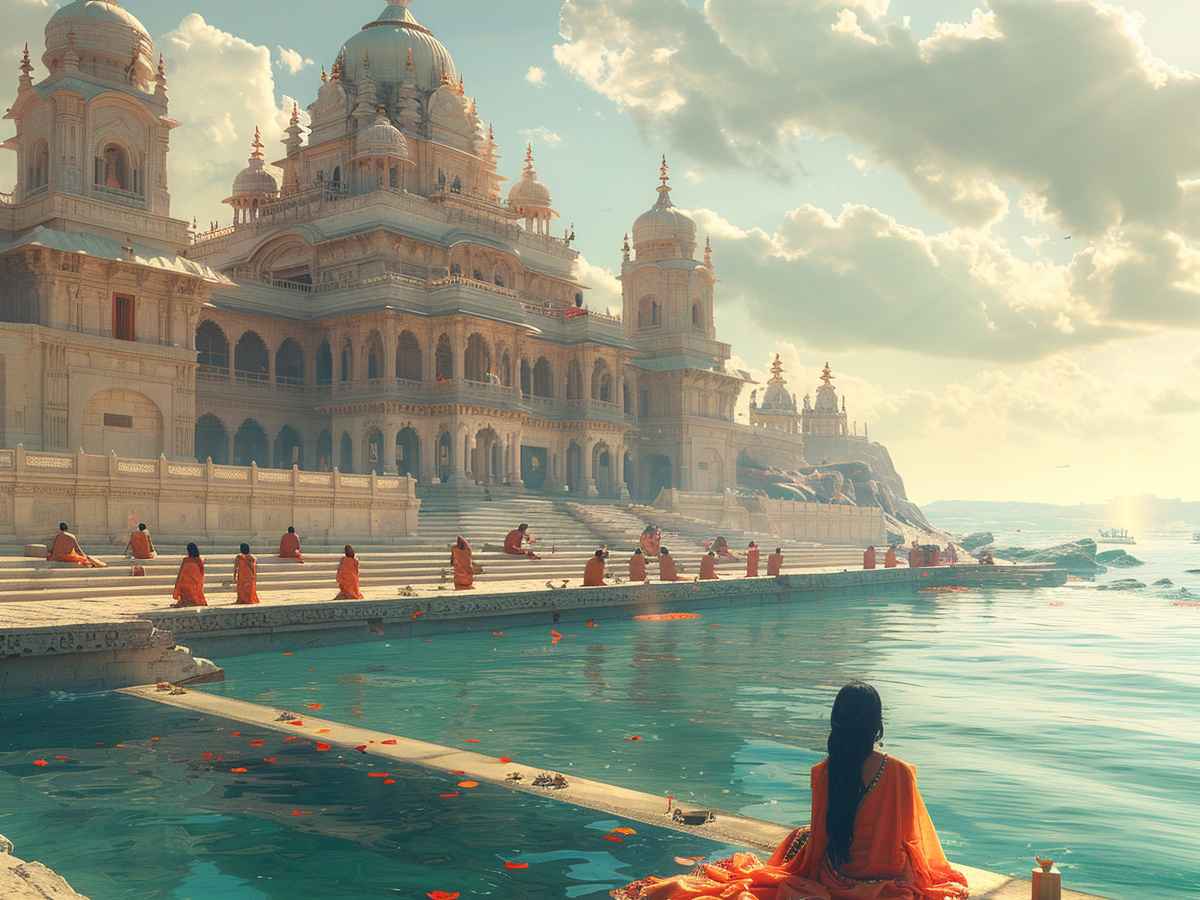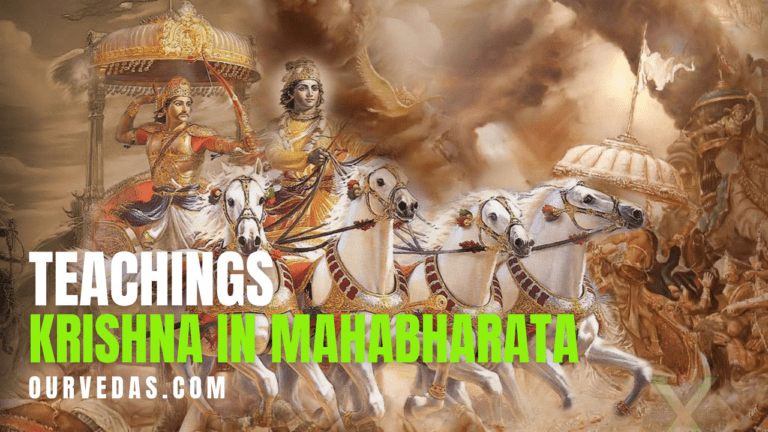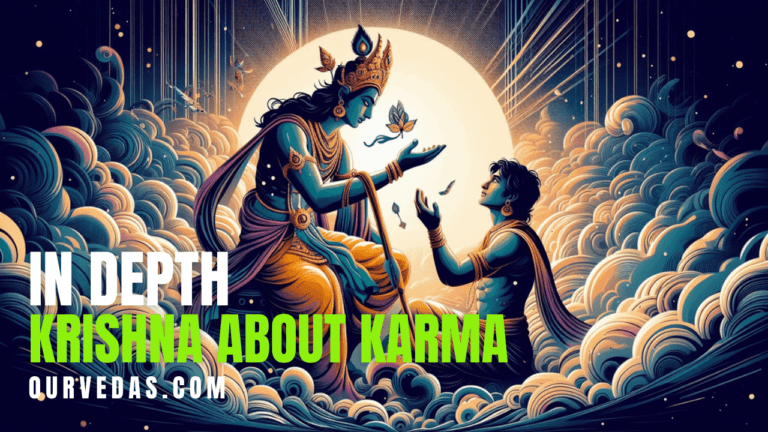The Sacred Char Dhams of Hinduism
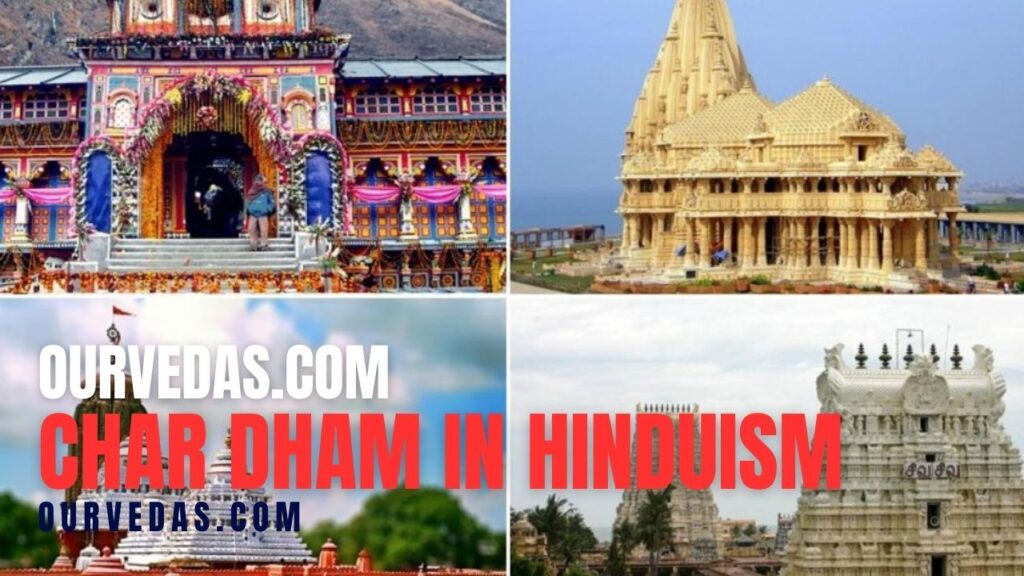
The four sacred pilgrimage sites in Hinduism are called the Char Dhams. These are:
- Badrinath is located in Uttarakhand and is dedicated to Lord Vishnu.
- Dwarka is located in Gujarat and is dedicated to Lord Krishna.
- Puri is located in the state of Odisha, dedicated to Lord Jagannath.
- Rameswaram is located in Tamil Nadu and is dedicated to Lord Shiva.
Badrinath – One of 4 Dhams in Hinduism
One of Char Dhams is Badrinath, where millions of devotees hold this place dear. The Temple is 3,133 meters (10,279 feet) above sea level and lies in the Chamoli district of Uttarakhand, India. Dedicated to Lord Vishnu, the Temple is held sacred. It is nestled between the Nar and Narayana mountain ranges, and the Alaknanda River flows nearby. The environment around this Temple is serene and spiritually uplifting.
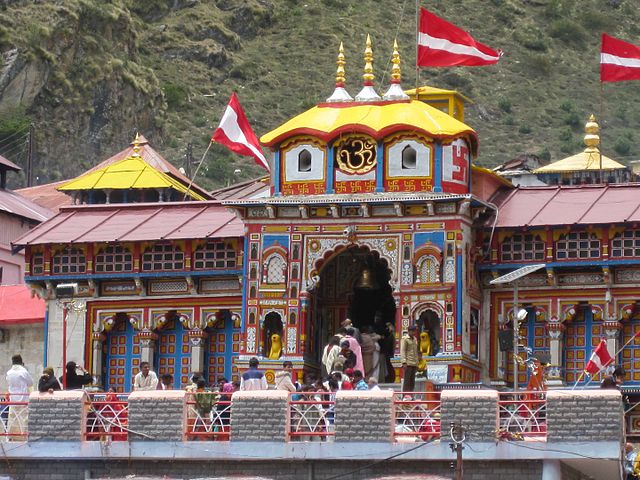
Badrinath originates in Hindu mythology and ancient texts. It is said that it was once a forest of berry trees (Badri) where Lord Vishnu sat in meditation for thousands of years. However, the structure of the Temple as it is Adi Shankaracharya was created today in the 8th century AD; the site had been a worship place much before that.
The temple’s name is mentioned in several ancient texts, such as Mahabharata and Puranas, and its importance is noted. According to tradition, this place is also supposed to be one of the points where the Pandavas, the heroic characters of the Mahabharata, took the road to heaven. The Temple is one of the 108 Divya Desams, revered Vaishnavite shrines, and is believed to be the abode of Lord Vishnu in his Badrinarayan form.
One of the unique features of the Temple is the Tapt Kund, a natural hot water spring believed to be medicinal in its properties. Before entering the Temple, pilgrims dip in these thermal waters because they are believed to be purifying and auspicious.
One of Char Dhams, this Temple is open to the public for six months a year, from the end of April to early November, due to extreme weather conditions in the Himalayas. The opening and closing dates of the Temple are also essential dates in the Hindu calendar and were celebrated with great fervor.
Nearby Attractions to Badrinath Temple
The region around Badrinath is rich in natural beauty and cultural heritage. Some notable attractions include:
Mana Village: Mana is the last village inhabited before the India-China border and has mythological significance. It is said to be where the Pandavas started their journey to heaven.
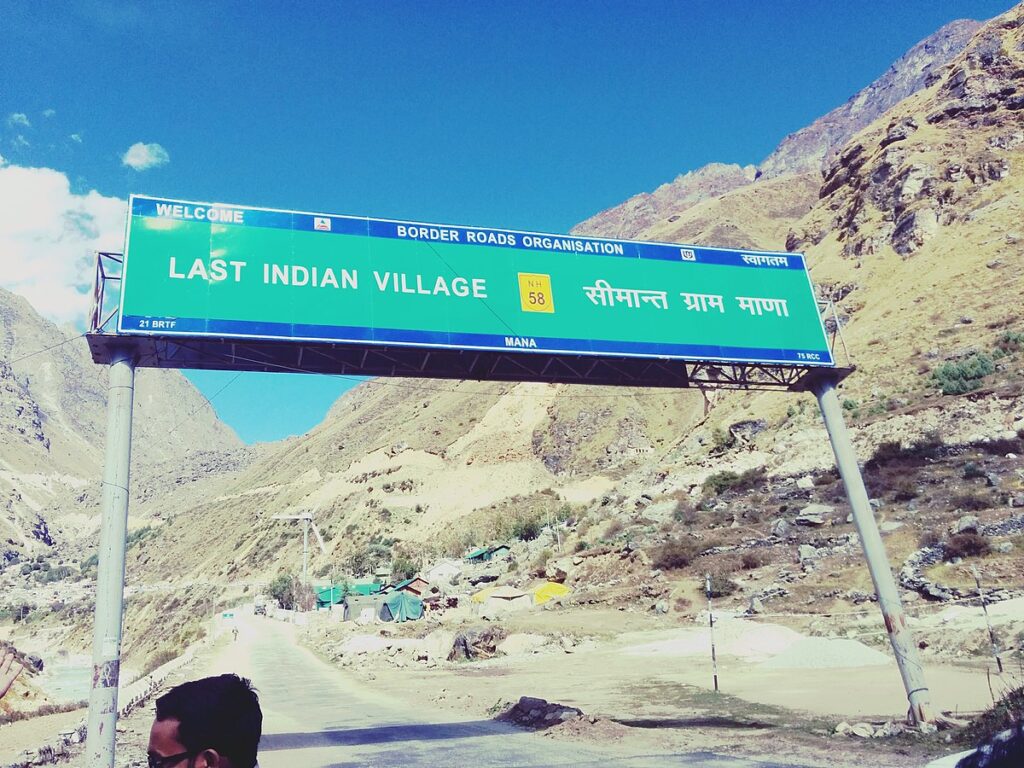
Vasudhara Falls: This is a beautiful waterfall located near Mana Village.
Bheem Pul: A natural rock bridge over the Saraswati River, said to have been installed by Bhima, one of the Pandava brothers.
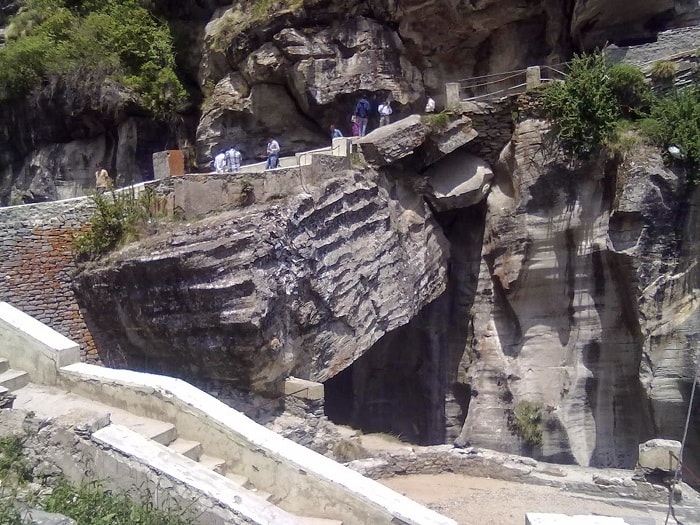
Badrinath is not merely a temple; it represents faith, devotion, and spirituality. The journey to Badrinath is the only transformative experience where all-natural beauty, historical significance, and deeply etched religious traditions go hand in hand. For millions of Hindus, visiting Badrinath presents a once-in-a-lifetime opportunity for the conglomerate and people to connect with the divine and obtain blessings for a whole life and final salvation.
In the words of Adi Shankaracharya, who re-established the Temple, “Badrinath is the place where the Supreme Lord Vishnu resides, and it is the gateway to salvation.” This feeling has been attracting people from all walks of life and across the globe, making Badrinath a timeless and sacred destination in Hinduism
Dwarka- One of 4 Dhams in Hinduism
Dwarka, one of Char Dhams is a costal city. It is a city that once flourished along the western coast of India. In Hindu mythology and history, it’s said to be where Lord Krishna dwelt. Dwarka is mainly known for its connection to the most revered deity in Hinduism, Lord Krishna. Still, it is also filled with mysteries that continue to capture the imagination of scholars and devotees alike. This paper will present the mysteries of Dwarka, its historical significance, and the continuing faith that Lord Krishna is an eternal being.
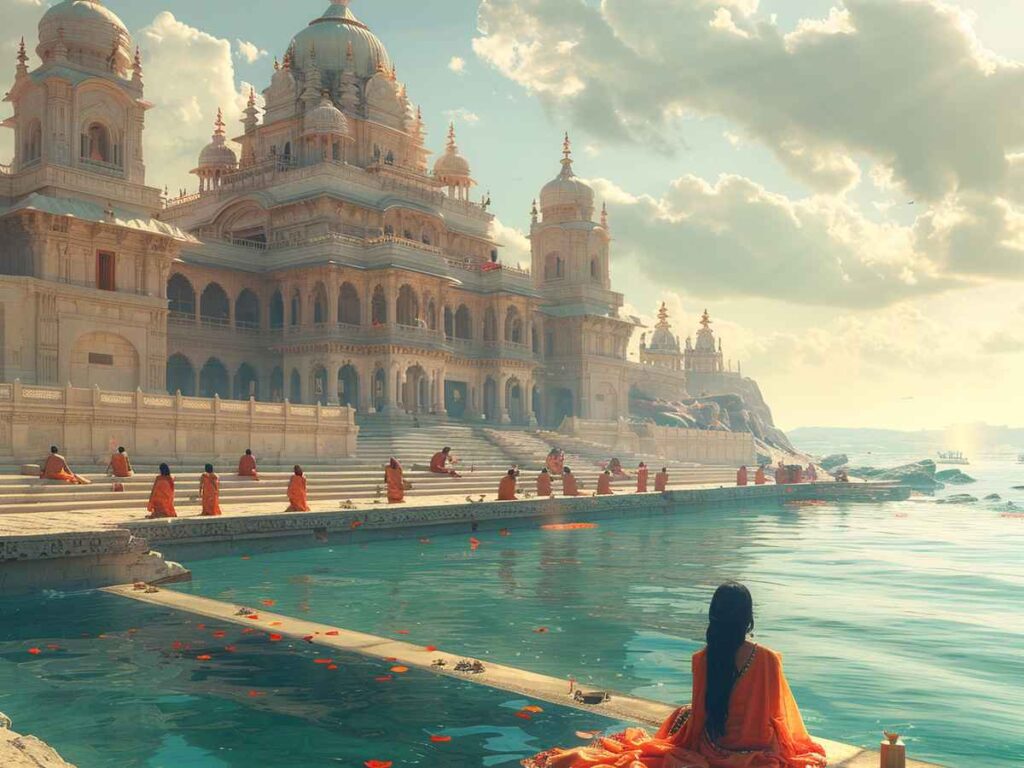
Dwarka, also known as Dvaraka or Dwaravati, is said to be the capital of the old Yadava kingdom that Lord Krishna found. According to Hindu scriptures, Lord Krishna stayed in Dwarka after leaving Mathura and played a vital role in its development. IT is one of reasons that Dwarka is celebrated today as one of Char Dhams.
The city is described as a magnificent and prosperous metropolis, with Lord Krishna ruling as its beloved king. The city’s grandeur is described in texts like the Mahabharata and the Srimad Bhagavatam, defined as places adorned with palaces, divine temples, and vibrant markets. Dwarka was said to be a flourishing cultural and spiritual center during the time of Lord Krishna.
Underwater searches for the lost city of Dwarka have taken place off the Gujarat coast. Marine archaeologists discovered underwater structures and artifacts during the last decades of the 20th century that are believed to be parts of the ancient city. These findings have given substantial proof to the idea that Dwarka was, in fact, a place that existed with history and past glory.
Archaeological Evidence realted to Dwarka
Archeological finds supporting the claims of Dwarka are consequential. Marine archaeologists have discovered structural remains, artifacts of pottery and coins, and some other things pointing towards a highly advanced culture. The discovery of these remnants has renewed interest in Dwarka’s historical authenticity and its importance in ancient Indian history. Findings have also given valuable insight into the urban planning, architecture, and cultural practices of the people who lived in Dwarka.
The belief that Lord Krishna is still alive is rooted in Hindu traditions and scriptures. Lord Krishna, they say, did not die in the conventional sense but rather a divine exit from the mortal plane they call “Jal Samadhi.” There, it is said that Lord Krishna immersed himself in the waters of the Arabian Sea near Prabhas Patan-Dwarka for its plunge into eternity from his celestial abode.
This belief is further supported by the fact that Lord Krishna is an avatar of Lord Vishnu, one of the principal deities in Hinduism. Lord Vishnu is believed to be eternal and unchanging, and his avatars, including Lord Krishna, are seen as manifestations of his divine presence. Therefore, many Hindus believe that Lord Krishna, like Lord Vishnu, is still alive in a spiritual realm.
Dwarkadhish Temple
One of Char Dhams, the Dwarkadhish Temple, also known as the Jagat Mandir, is one of the most revered temples dedicated to Lord Krishna. Located in Dwarka, this beautiful Temple is a five-storeyed monument with the main shrine almost 78 meters tall. The Temple is said to be about 200 BCE and rebuilt between the 15th and 16th centuries.
Legends say that the Mahabharata was present when the Dwarka Kingdom was mentioned the whole time. This Temple was said to have been built by Vajranabh, the grandson of Lord Krishna. It was later destroyed in 1472 by Mahmud Begada but was rebuilt along the Chalukya architectural pattern.
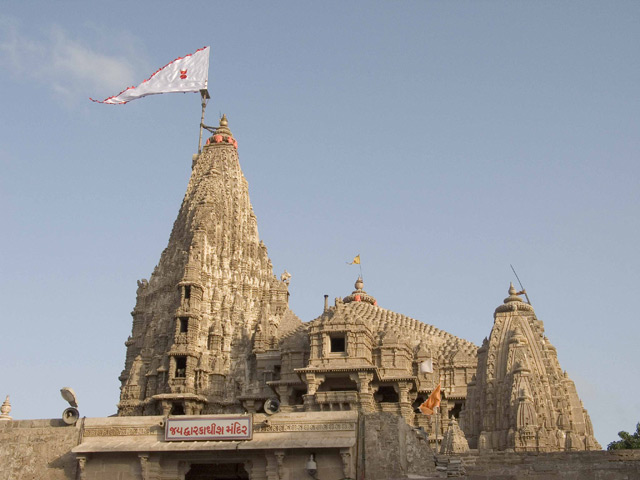
The legend of Dwarka, one of Char Dhams, is well woven into the life and times of Lord Krishna. Hindu mythology says that Lord Krishna founded Dwarka after leaving Mathura to escape the tyranny of King Kansa. The city was built on land reclaimed from the sea, and it soon became a flourishing and lively kingdom.
Dwarka is mentioned in many ancient texts, including the Mahabharata, the Harivamsa, and the Vishnu Purana, which elaborate on its grandeur and opulence. Its glorious palaces, dazzling gardens, and thriving markets represent its former glory.
These will be important in understanding how Dwarka was historically and culturally significant and helping its legacy not be lost. Conservation projects target the protection of the underwater heritage of Dwarka and public awareness of the historical wonder that is Dwarka.
Puri- Char Dham
Puri is a coastal city in the eastern Indian state of Odisha. It is one of Char Dhams. It is famous for its rich cultural heritage, spiritual significance, and historical importance. It is one of the four sacred Dhams in Hinduism, which include Dwarka, Badrinath, and Rameswaram. Puri is known for the magnificent shrine of Jagannath Temple, which is dedicated to Lord Jagannath and is an incarnation of Lord Vishnu.
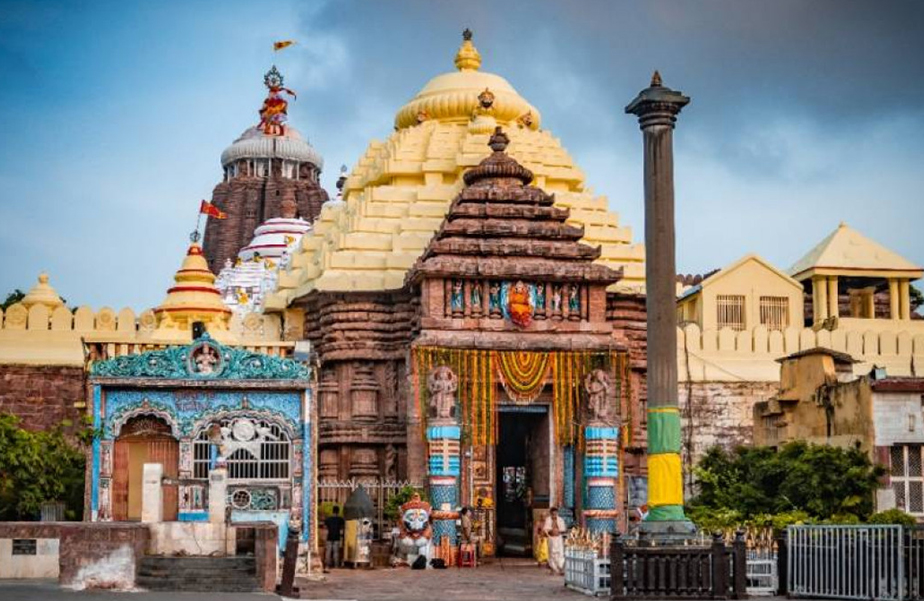
The Jagannath Temple: Spiritual Beacon
The Jagannath Temple forms the heart and soul of Puri. The Temple was built during the 12th century by the ruler, King Anantavarman Chodaganga Deva. Indeed, it is a masterpiece of architecture that testifies to the devotion and craftsmanship during that time. The Temple’s spire is tower-like, with a reach and height of approximately 214 feet.
It goes a long way in dominating Puri’s skyline and can easily be seen from miles away. Temple: The Temple has a vast structure built with an area surpassing 400,000 square feet and comprises scores of smaller shrines, halls, and courts.
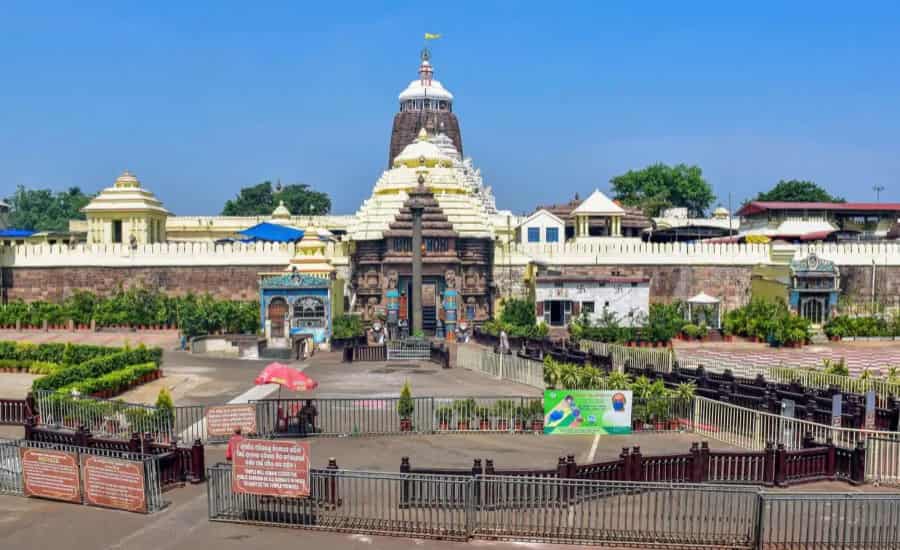
The principal deities worshipped in the shrine are Lord Jagannath; his brother is Balabhadra, and their sister is called Subhadra. The wooden idols used for these three deities draw great reverence and mystery associated with them. Every 12 to 19 years, new idols are carved out of sacred neem trees during a sacred ritual called Nabakalebara. The process is steeped in tradition and secrecy; only a select few priests know the exact location of the trees and the rituals involved.
The Rath Yatra
One of the most fascinating, gaudy, and celebrated festivals of Jagannath Temple is the Rath Yatra or Chariot Festival. It is held every year in the month of Ashadha (June-July), wherein the deities are taken out of the Temple and placed upon enormous chariots, which are then dragged by devotees along the Puri streets. The chariots are elaborately decorated and resemble temple structures, with each chariot dedicated to one of the deities: Lord Jagannath, Balabhadra, and Subhadra.
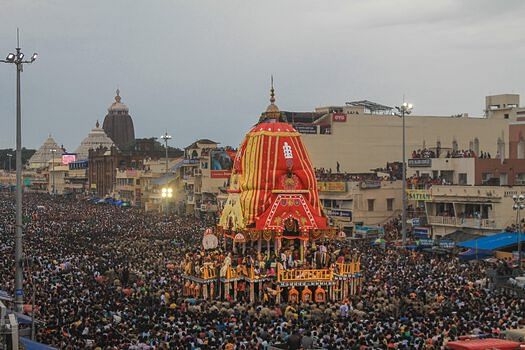
The Rath Yatra is a spectacle of devotion, color, and grandeur, attracting millions of pilgrims and tourists worldwide. This festival represents Lord Jagannath’s egalitarian nature, as the deity is believed to come out of the Temple and bless all, disregarding caste, creed, and any form of societal grouping during Rath Yatra. The event further represents a cultural phenomenon and social setting that unites participants under one code or sense of belonging.
History of Puri
During the reign of the Eastern Ganga dynasty, Puri became a major center of Vaishnavism, a sect of Hinduism that worships Vishnu and his incarnations. The construction of the Jagannath Temple under King Anantavarman Chodaganga Deva marked a significant period in the city’s history, establishing Puri as a primary pilgrimage site.
The artisans of Puri are also very skilled in stone carving, woodwork, and applique work, which are an integral part of the city’s cultural heritage and makes it one of beautiful Char Dhams.
The traditional dance forms of Odisha, such as Odissi and Gotipua, trace their origin to Puri. These dance forms are characterized by graceful movements, intricate footwork, and expressive gestures performed during religious festivals and cultural events. The city’s musical tradition is well known for its devotional songs and classical music, which are essential to Puri’s spiritual and cultural fabric. Devotees often dip in the sea as part of their ritual purification before visiting the Jagannath Temple.
There are several smaller temples and shrines along the coast of Puri, each of which adds to the spiritual aura of the city. The Konark Sun Temple, about 35 kilometers from Puri, is another architectural wonder that draws tourists to its intricate carvings and history. Dedicated to the Sun God, this Temple is a UNESCO World Heritage Site celebrated for its majestic architecture and artistry.
The Odisha government and numerous Non-Governmental organizations have focused on maintaining and conserving cultural and environmental resources in Puri. For this purpose, such initiatives as the rehabilitation of old monuments, reviving traditional art, and conservational measures through ‘green activities’ are in full swing for safeguarding nature’s splendor in this historic city so that it is lively and sustainable forever.
Puri is a city that embodies India’s spiritual, cultural, and historical essence. The city’s enduring legacy as a spiritual beacon and cultural hub continues to inspire and captivate all who visit. The more it tries to protect and preserve the heritage of Puri, the more the city stands as a witness to its people’s undying love and incredible artistic talent.
Rameshwaram- One of 4 Dhams in Hinduism
Rameshwaram, one of the most sacred places in Hinduism, is a peaceful island town in Tamil Nadu, the southern Indian state. It is quite popular, especially for the beautiful pilgrimage center, Ramanathaswamy Temple, dedicated to Lord Shiva. Rameshwaram is dear to every devotee because it is associated with the epic Ramayana and forms a sacred abode that is spiritually important as well.
The article will narrate the history, myths and legends, cultural traditions, spiritual heritage, and legacy of Rameshwaram and why it is one of Char Dhams.
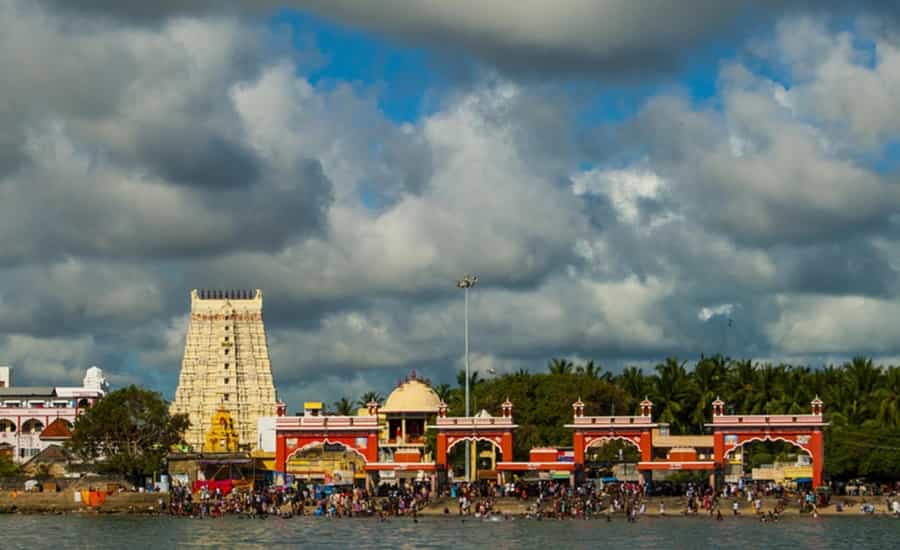
Rameshwaram is highly associated with the epic Ramayana, one of the greatest epics in Hindu literature. The Ramayana narrates that Lord Rama, accompanied by his army of Banaras (monkeys), constructed a bridge from Rameshwaram to Lanka, which is modern-day Sri Lanka, to rescue his wife, Sita, from the demon king Ravana. This bridge, also called Rama Setu or Adam’s Bridge, symbolizes devotion and determination.
The town is named after Lord Rama. It is reportedly believed that he had come here and performed worship of Lord Shiva to absolve himself of the sin of killing a Brahmin named Ravana. It is said that Lord Rama himself established the Ramanathaswamy Temple, devoted to Lord Shiva. The sanctiTemple’s sanctity and conviction that a pilgrimage to Rameshwaram can wash away one’s sins compel more Hindus to visit it.
The Ramanathaswamy Temple
Among the most remarkable features of the Temple are the very long corridors that, in fact, rank among the longest in the world. Intricately carved pillars decorate these, which testify to the period’s design skills and one of most beautiful Char Dhams. The gopurams of the Temple are also very impressive, as intricate sculptures can be found describing various scenes of mythology.
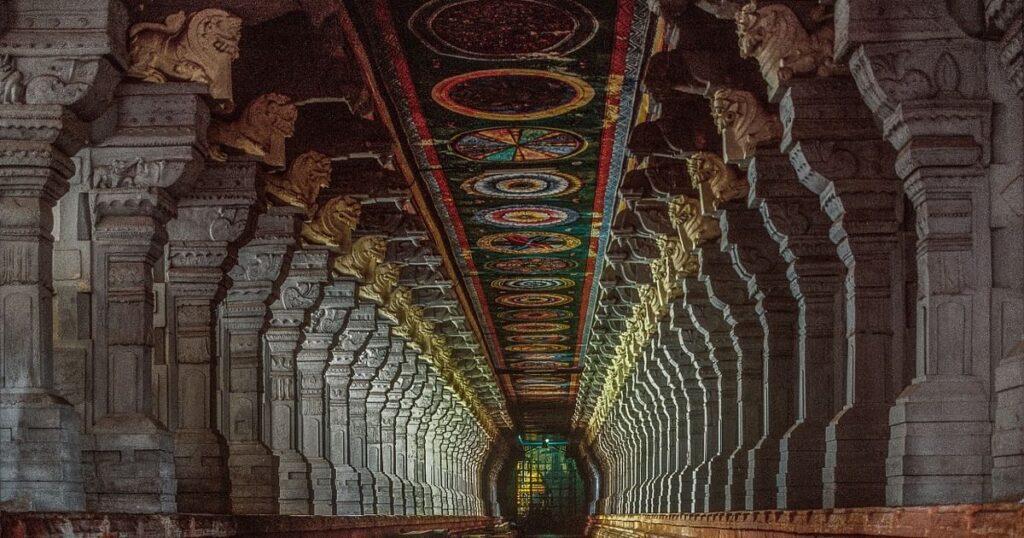
The main deity in the Temple is Lord Ramanathaswamy. He is essentially a form of Lord Shiva and is represented by lingam, an iconic representation of Shiva. This lingam is said to have been installed personally by Lord Rama himself. The Temple also has several other shrines for important deities like Lord Vishnu, Goddess Parvati, and Lord Ganesha.
The first exclusive ritual at the Temple is the holy water from the Agni Theertham, a sacred tank near the Temple. Devotees believe in cleansing their sins by bathing in the holy water of Agni Theertham. Another 22 other theerthams are available within the temple premises. Each has relevance to a specific deity, and the devotees here are believed to possess various healing properties.
The Spiritual History and Festivals
Rameshwaram is a hub from a historical and mythical perspective and a shrine, attracting millions and millions of people to this particular destination. In a calm environment, with spiritual activities that form such an essence, one may seek asylum in Rameshwaram by asking God’s hand in finding his lost fortunes. I
There is a deep belief in Hinduism that a pilgrimage to Rameshwaram can help absolve a person of all sins and bring spiritual enlightenment which makes is one of Char Dhams. The fact that the town is associated with Lord Rama and Lord Shiva adds spiritual charm to this place, thus making it one of the revered destinations for devotees all over India and beyond.
Rameshwaram is also very rich in vibrant cultural heritage. Festivals, music, dance, and art reflect the cultural mixture of the Tamil and Kerala people. Among these festivals, the Maha Shivaratri festival dedicated to Lord Shiva is prominent in Rameshwaram which is celebrated as Char Dhams culture. The whole ceremony of this festival is highly decorated with different rituals, processions, and cultural performances and draws thousands of devotees and tourists.
The place is not merely spiritual and cultural but rather a natural beauty of a rare kind. The pristine beaches, clear blue waters, and lush greenery make the place a picturesque destination, and the Pamban Bridge, a marvel of engineering, connects Rameshwaram to the mainland, right from where one can see spectacular views of the seas.
Although it holds a deep spiritual and cultural value, Rameshwaram faces many problems, such as environmental degradation, urbanization, and the impact of tourism. During the peak pilgrimage Char Dhams season, the town’s infrastructure often gets overburdened, and there are issues with waste management and traffic congestion.
The Tamil Nadu government and other NGOs are working to maintain Rameshwaram’s heritage. This is important to ensure that Rameshwaram will remain a vibrant and sustainable destination for future generations.
As the efforts at preserving and conserving Rameshwaram’s heritage continue, this town stands as a living testament to its people’s timeless love and artistic excellence.

